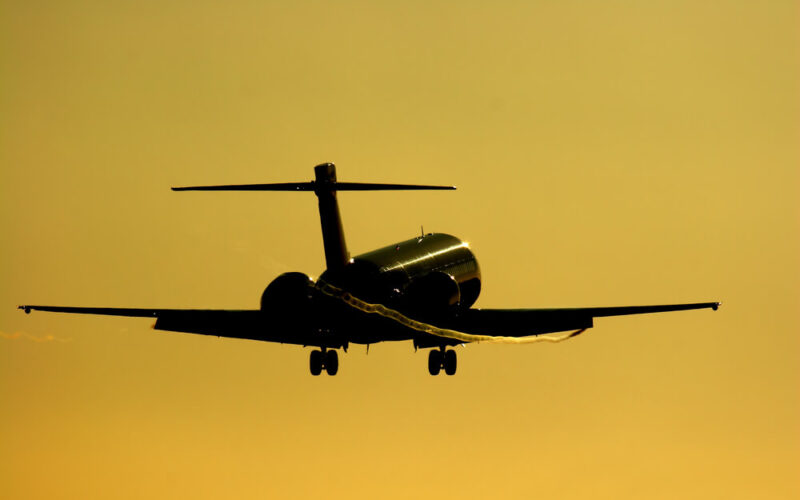The last decade of the 20th century was full of excitement and new adventures – aircraft manufacturers were launching new aircraft left and right. Boeing introduced the 737NG family, the 747-400 and the 777; McDonnell Douglas had its last hurrah with the MD-10 and MD-11, while on the other side of the Atlantic Ocean, Airbus showcased the A340 and the A330. Regional aircraft manufacturers were also active, as Bombardier introduced the CRJ series, while Embraer announced ERJ family jets.
But amongst the noise lived a quiet, yet very important aircraft – the Boeing 717. On September 2, 1998, the first 717-200 took off on a flight in the sunny skies of California, as “a cheering crowd of employees, suppliers and customers” watched the aircraft take-off and… fade into mediocrity. The 717 never made any huge strides in sales books, as Boeing only built and delivered 156 frames, with more than half of the deliveries going to a now-bankrupt airline AirTran Airways.
Sounds conflicting: the 717 had an important role in aviation history, yet Boeing had little to no success in selling the jet. While the 717 did not redefine business practices in the industry, it did redefine something crucial to every aircraft manufacturer to this day.
Saving R&D costs
Originally, the 717 was not even named using the classic Boeing 7×7 naming formula. It was designated as the MD-95 and developed by McDonnell Douglas (McD). The manufacturer announced the new jet at the 1991 Paris Air Show, aiming to provide a new and much more efficient 100-passenger option for airlines that operated the Boeing 737-300 or the Fokker 100. McDonnell Douglas planned the aircraft to enter final assembly stages in 1993, begin flight tests in 1994 and make the initial deliveries in late 1995.
But McDonnell Douglas was in financial ruin and barely had enough cash to develop new aircraft, which was evident by the fact that Boeing eventually acquired it in 1997, together with all of its commercial aircraft programs. Shortly after, Boeing canceled the production of McD’s aircraft – the manufacturer cut MD-11, MD-80 and MD-90 programs in 1998. Yet out of the four aircraft inherited from McDonnell Douglas, one had survived the chop – the MD-95, which was rebranded to the Boeing 717 on January 8, 1998.
Boeing very positively embraced the 717 and predicted that airlines would require “2,500 jetliners of 80-120 seats over the next 20 years”, while noting that the newly announced product is built “with the highest quality at the lowest possible acquisition cost”. However, the demand was never the problem. Boeing cannibalizing its own sales – was.
The 737NG family, especially the 737-600 and 737-700, were already competing in the 100-120 passenger segment with the Airbus A319. So, even if Boeing saved on research & development costs on the new aircraft, why would the company cannibalize sales of the 737?
Production innovations
In order to reduce the risk of failure and to reduce the upfront costs of developing a new aircraft, McDonnell Douglas sought after partners to develop and produce the new jet. Back in 2003, Dave Williams, a former McDonnell Douglas executive, said that the only way the manufacturer could develop the MD-95 was if the company “was basically using other people to do it,” as the McDonnell Douglas did not have “the cash to develop this product on its own”. Boeing inherited not only blueprints to the MD-95, but also the idea to outsource parts to build the aircraft. According to Boeing, 16 partners in the United States and “eight nations in Asia and Europe” shared the work to build the Boeing 717.
Main parts of the 717 were shipped from all over the world – the nose and cockpit were built in South Korea, the fuselage in Italy, the tail in Taiwan and the horizontal stabilizer was assembled in Japan. Boeing truly managed to control development costs and as a result, the manufacturer offered one Boeing 717 for only $18 million in 1998. Adjusted for inflation, a brand-new 717 would cost a customer $28.2 million in 2018. In contrast, a new Boeing 737 MAX-8 costs $121.6 million, according to Boeing’s list prices.
Low R&D expenses were not the only reason why the 717 was so stupidly cheap. Boeing introduced Strategic Business Transformation program in 1999 to further reduce costs of production. The company moved the assembly of the 717 under a single roof in Long Beach, South California at a former McDonnell Douglas plant. The company also enacted a moving assembly line, something that was previously unseen in commercial aviation. Airbus introduced the moving assembly line concept only in 2005 to speed up the A320 family aircraft production in Hamburg.
The Boeing 717 was also the first aircraft certified by both the FAA and the now-defunct European aviation authority, JAA.
Stepping stone
Essentially, Boeing seized the perfect opportunity to experiment with its operations – it received blueprints and initial orders of the jet from McDonnell Douglas together with the assembly plant in Long Beach. The 717 was a learning time for Boeing, as the manufacturer prepared to develop the Sonic Cruiser, a study predecessor of the 787.
Boeing 717 production became a stepping stone for the company to implement the same strategy (using multiple suppliers and a moving assembly line) for its next project – the 787. And while to many the Boeing 717 is forgettable, it certainly changed the way that aircraft are manufactured by reducing the complexity and costs while increasing the efficiency of development and assembly at a factory.

